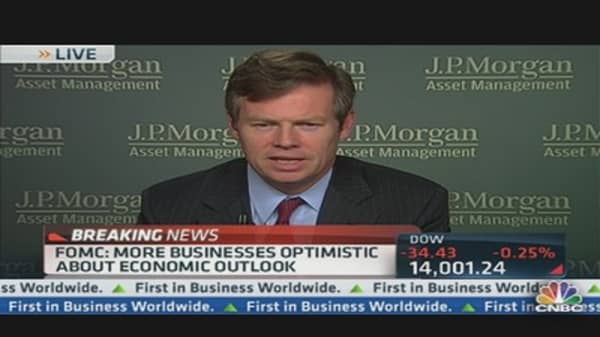The minutes, which describe the discussions of policymakers during the two-day January FOMC meeting, reveal that "most participants" believe the asset purchases have been effective at stimulating the economy and easing financial conditions. Nonetheless, concerns about quantitative easing appear to be mounting. According to the minutes, "many participants" in the meeting expressed concerns about "potential costs and risks arising from further asset purchases."
(Read more:Fed Bond Buying Will Run for a 'Long Time')
The minutes of the meeting do not reveal the identities of which policymakers raised which concerns, referring instead to vague descriptions such as "many participants" or "several participants." It's anyone's guess what the difference between "several participants" and "many participants" might be. "A few" presumably means a smaller number than "some participants" but no one really knows.
Among the risks raised at the meeting were "complications" that additional purchases could cause for an eventual Fed exit from its accommodative monetary policy (attributed to "several participants"), inflationary risks ("a few" participants), and fostering market behavior—presumably reaching for yield—that could undermine financial stability ("some" participants).
The minutes give hints at potential changes to the quantitative easing program.
"Several participants emphasized that the Committee should be prepared to vary the pace of asset purchases, either in response to changes in the economic outlook or as its evaluation of the efficacy and costs of such purchases evolved," the minutes said.
One option discussed would be for the Fed to vary the size of purchases from meeting to meeting, much as the Fed used to vary interest rates from meeting to meeting. This option is attributed in the minutes to "one participant."
Policymakers are also divided on the effect of quantitative easing on financial markets.
"A few also raised concerns about the potential effects of further asset purchases on the functioning of particular financial markets, although a couple of other participants noted that there had been little evidence to date of such effects," the minutes say.
(Read more: Fed watchers join QE debate with scathing words.)
The staff of the Fed was asked for additional analysis ahead of future meetings to support the FOMC's ongoing assessment of the asset purchase program.





